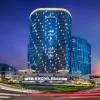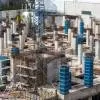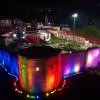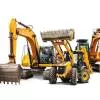- Home
- Real Estate
- Building Safety and Efficiency Post COVID-19
Building Safety and Efficiency Post COVID-19
Photo: For representational purpose.
Did you know that we lose 35 lives a day to fires? That over the last four years – 2015-2018 – we have lost 60,500 lives due to fire? The National Building Code 2016 has guidelines issued to all state governments to incorporate the recommendations of the latest NBC 2016 Part-IV Fire & Life Safety report into their local building bye-laws; the code also now incorporates the Energy Conservation Building Code developed by the Bureau of Energy Efficiency. The World Green Building Council estimates that green buildings could generate higher returns. We know that additional costs could be lower by 0.5 per cent to 12 per cent; operational costs up to 37 per cent; green buildings could achieve sales premium of up to 31 per cent and faster sales times; occupancy rates could be higher by 23 per cent and rental income by up to 8 per cent.
Construction World organised a free webinar on ‘Building Safety and Efficiency Post COVID-19’ with a distinguished panel of experts to discuss and deliberate on this topic. The webinar began with presenter Pratap Padode, Editor-in-Chief, Construction World, welcoming the guest panellists to the session. The panellists included industry stalwarts –Ashish Rakheja, President, International Fire & Safety Association of India; Sanjay Seth, CEO, GRIHA Council; Richie Mittal, National President, ISHRAE; and Vishal Kapur, Chair-Technical Committee, ISHRAE.
Safety in buildings
Pratap Padode, Editor-in-Chief, Construction World, said on an opening note, “The National Building Code lays down several provisions that help protect buildings from fires and enable easy evacuation, yet fires have been taking place regularly. COVID-19 has brought in another set of SOPs for safety in buildings. Recently itself, there have been three fires in and around Mumbai during the COVID times. An NCRB report about Fire Safety in India indicates that 12,748 Indians died in fires; 1,719 died from electrical short-circuits; 56 per cent of all fires are in homes; and 1,967 women died of cooking gas burst. 35 Indian die of fire accidents every day. 55 per cent of fire deaths are just from the five states of Madhya Pradesh (1,986), Maharashtra (1,896), Gujarat (1,194), Chhattisgarh (976) and Odisha (897). More women die of fire accidents than men. 7,208 of the deaths are from home fires. 1,368 men died of fires due to electrical short-circuits.”Most recently, on June 10, the Maharashtra Housing & Area Development Authority (MHADA) also put out a list of ‘most dilapidated’ buildings in the city. Eighteen buildings, including the Esplanade Mansion, have been marked as ‘dangerous’ for living.
On another note, he remarked that buildings use nearly 40 per cent of a city’s electric power and have begun to offer myriad services, including indoor air quality—expected to become a major performing metric—besides HVAC, maintenance services, security and, notably, fire detection.
Changes in building codes
When asked about any changes required in the building codes in the light of the COVID crisis, said Sanjay Seth, CEO, GRIHA Council, “The codes are very much in place and they cover a whole lot of range of issues around safety and comforts and resource efficiency. They are well specified and defined in these codes. The area where we lack is the implementation frameworks – we are not very serious on how we approach it and how we go about implementing it.”He added that the current pandemic really highlights and shows us the state of play of how vulnerable we are and what we really need to do, so that we adhere to the planning and the design and don't obviate any of these, and follow them as close as possible. Seth believes that one of biggest challenges will be the dampened spirit of the real estate sector due to the pandemic, the lockdown and the issue of migrant labour. “It will take about 6-12 months for it to really revive or may be even more to be picking up the same speed at which we were growing earlier. We need to really start looking at transformational changes in the kind of buildings that we were designing. There would be paradigm shifts in the way we design the various segments in real estate.”
Air quality – changes in HVAC
Here, Richie Mittal, National President, ISHRAE, draws light on how air quality will now be talked about very much due to the pandemic. “We have been talking about air quality from the very beginning but air quality was pertaining to comfort. We were talking of inducting fresh air for CO2 levels; we were trying to filter the air quality for PM 2.5 and other parameters. Now with COVID, people will seriously think about air quality; and there are a lot of technologies available. Dilution in the air is the solution to the problem. Potentially, air quality is going to be the highest priority of every building.Here, added Vishal Kapur, Chair-Technical Committee, ISHRAE, “I'm a little pessimistic in some cases. I find Indians have a short memory and we worry about air quality right now because of COVID. In another 6-12 months, when it's all over, we would have again forgotten about it. Unfortunately, a lot of us in India are using air quality protocols, norms or the suggestions only possibly to getting some points and for ratings, but the real requirement from a long-term perspective is missing. Some buildings in the construction and commercial sector put in the right filter in an air handling unit based on the recommendation of a consultant or a designer, which is the requirement. You go to the building after a couple of years and you realise the filter has disappeared. I have walked into hospitals during COVID and they have air handling units running that are throwing in air converted into 100 per cent fitted fresh air unit, which means that a 100 per cent outdoor air supply and the filter is just not there! So the unfortunate thing for us in India is going to be are we going to be forgetting this after six months or one year? Or are we now going to be taking this seriously for the future?”
We have 1.2 million deaths because of air pollution, and yet, how many of us are really concerned about the air we breathe? “Most people in the world are not bothered about the air they breathe, and that needs to change going ahead, not just because of COVID but permanently – whether it comes in as regulations, as a combination of self-consciousness,” added Kapur.
“What we are recommending as guidelines coming out of ISHRAE or other guidelines is basically reinforcing the basics that were always part of the design; just that they have been forgotten,” highlighted Ashish Rakheja, President, International Fire & Safety Association of India. “If you look at the green building norms, they also talked about the same thing. Whereas the larger buildings were still following it to some extent, the problem was in the small shops, the window ACs, VRS – that's where the real understanding of the subject would start coming in. That shift in the market is now coming in.”
Infra deficit in manpower strength and fire-fighting equipment
As Fire and Security Association, when we started, this deficit was one of our major concerns, highlighted Rakheja. “There was so much happening on the equipment availability front in India as such in a private industry, but on the infrastructure side, there was still a lot lacking. The challenge, of course, comes down to a general awareness because the fire safety should not start from the regulatory bodies but from us, for our own safety. So the challenge is not on the regulatory side alone, but on self also. There are very few instances where we come across a good fire fighting equipment in your own building. What kind of awareness do we as engineers or building owner or operators carry? So, the responsibility lies first on us and then on the authorities.” The Fire and Security Association has been engaging with chief fire officers across India; some of the CFOs like those from Goa, Maharashtra, Gujarat, have been very active on its platform. It has also been doing demonstrative exercises of fire safety equipment at various buildings. “If I look at what the situation was a few years before FSA took on this activity to what it is now, there is a sea change,” averred Rakheja.
ISHRAE guidelines
There have been concerns raised about the likelihood of the spread of COVID through the operation of air-conditioning systems. There are questions about whether the spread can be accelerated or controlled by HVAC systems depending on how it is designed or operated. Especially now with relaxations in the lockdowns and more offices, factories and shops opening up, there is a lot of debate around air-conditioning on whether it can be used, does the system require modification, how to restart a facility, what guidelines to follow, etc.So, added Kapur, “ISHRAE put together a COVID Task Force covering academia, designers, manufacturers, etc, across the country and brought out this guidance documents for air-conditioning operations, and we basically covered indoor environment conditions – applications like residential, commercial, industrial, healthcare, operation and maintenance including start-up and restart-up of facilities, and safety do's and don'ts for technicians. This document has got major acceptance across the country, for example, from the CPWD, MES, state governments, facility management organisations, green rating agencies, healthcare organisations, private companies, etc.”
In this technical document, added Kapur, “we have broadly given our recommendations for temperature, for humidity, and finally, going back to what was always supposed to be there – the three key aspects of the system: Ventilation, filtration and pressurisation. If these three are taken care of, whether it is a hospital or an office or a residence or any kind of application, we are more or less safe. Especially for commercial establishments and industrial facilities it becomes even more important to understand how to operate an air-conditioning system. The mechanical, ventilation and filtration, which can be provided by a central air-conditioning system or any air-conditioning system, can actually perform this function far more effectively compared to simply opening the windows, because a mechanical system will actually properly ventilate the space, will improve the indoor air quality with the outdoor air filtration. So even in COVID, air-conditioning and ventilation systems can be safely operated in residential, commercial, healthcare, etc, with specific controls for temperature, humidity and the right amount of outdoor air coming in, maintaining the hygiene levels, improving filtration points, and taking care of all other aspects over there.”
Retrofitting existing systems
You need a specialised qualified designer or contractor to help modify, according to Kapur. “At the same time, most systems can be retrofitted or modified without changing the entire system all together. You would need change in some components or parts of the system. For example, our document says you can add a smaller treated fresh air unit to bring in fresh air or find other ways without changing the entire system. But again, these are required anyways, not only because of COVID.”
Guidelines on the fire safety
Buildings are going to restart now. And so fire safety is one important aspect when we restart. We need to be careful about the systems with regards to how they are operating. So, added Rakheja, “There is a Task Force, which was set up by FSAI – there are guidelines issued by FSAI which talk about the do's and don'ts of how the fire system should be restarted. It then comes down to operations about the protection of the people involved in the operations of the building.”
Building Fitness Guidelines
GRIHA on the other hand created this tool called the Building Fitness Indicator. Post the lockdown, when people start going back to their workplaces, there is a certain amount of apprehension as to how safe the workplaces are and whether they would be you know prone to these infections during these times, and how have the workplaces been secured in terms of sanitisation and hygiene and social distancing. “We have considered various guidelines issued by the World Health Organization or the Ministry of Health and Family Welfare, guidelines such as ISHRAE, the Central Pollution Control Board, etc, which have issued various kinds of checklists,” said Seth. “What we have done is using these guidelines, we have created a tool which helps you to assess how safe and secure your place is, so that there is some amount of confidence that is built into the people who are going back to work. We have created this tool and are encouraging people to use this it; it is free of cost.”
How can buildings efficiency play a role in mitigating costs?
It is a no-brainer that green buildings not only save energy, water, waste, but also in terms of working and living out of them. They are much more healthier facilities to be using. “On the long term, if you see the energy saving potential from residential sector alone if you they were going to go green, is to the extent of about 70 terawatt hours – and that's a huge amount of savings,” averred Seth. “And if you look at the commercial sector, it is about 32042 terawatt hours – and there obviously lives in a huge amount of opportunity to reduce our carbon emissions considerably and also provide for India's energy security, which we have been discussing in the past. We have also seen there is a huge amount of water stress – 54 per cent of India is facing very high to extremely high water stress, resulting in detrimental stalling of construction activities.” And recently, Bengaluru’s construction activities were stalled because of the water crisis. This may become a commonplace event in the future. So such environmental impacts of buildings have also aggravated.Green buildings provide an evidence-based framework to ensure that our future building stock is not only resource-efficient but also low carbon. “At the same time, it is important for people to be understanding that there is this myth around the incremental cost of going green, which is completely wrong,” highlighted Seth. “In fact, if you were to evaluate right from the planning of these buildings to their operations, even during construction, the costs of these buildings don't go high and there are enough case studies which, if evaluated, show that the capital cost doesn't go up in going green.”
The pandemic is also knocking on our door to tell us that we cannot afford the luxury of not going green any further. It is very important that we adhere to the green norms. “The Government of India has already issued various guidelines in their role, but thereafter following them is our own responsibility – as occupants of buildings or those involved in development of buildings,” said Seth. With the current crisis, green buildings become a huge opportunity for the economic revival as well.
Obstructions in going green
Green buildings provide you a healthy environment. “All that we are talking about in the COVID era and about healthy buildings, is all a very integral part of the green building design,” added Rakheja. On the cost part, he added that green doesn't cost more! Another challenge he highlighted is that green has still stayed with elite. “It has not filtered down to the bottom level. That’s where the disconnect is – we have not connected with the common person.”
Bringing cost down
There is clearly a cost reduction if you follow some protocols. “So cost reduction is one angle one has to look at on the commercial part,” said Mittal. “On the residential part, probably just 5-6 per cent of people would be using air-conditioning for residential application. As of now what we recommend is that whenever the cost analysis is done, it has to be done on a life-cycle cost analysis, not on the initial cost or running cost. Then there will be a better understanding of the saving.”
Is high cost associated with technology an obstruction?
One of Rakheja’s assessments on why the construction technology adoption has been poor has been due to the lack of viability of the business environment in the country – be it a consultant, a contractor or a developer – the profit margins they are working on has been very low and some of it is a completely unviable industry. “Coming to IoT-based solutions have been around – whether we start with the simple building automation systems to what they've evolved to becoming today, IoT-based solutions, they don't cost much. From Rs 25 a sq ft to Rs 40 a sq ft, I can get a decent automation system installed. In a building which costs you Rs 2,500-3,000 a sq ft, Rs 35-40 per sq ft for automating it, for taking out the labour cost dependencies on it, is not a big cost to pay,” he exclaimed. “The challenge is there has been a lack of trust on these technologies; automation doesn’t work because of the poor labour we deploy and the poor training we have in our industry. Also, the technology has been so fast changing that their penetration and understanding at a designer level and user level is still not complete.”The biggest gap Kapur sees is that people who understand the technology do not understand the applications, and people who understand the applications do not have knowledge of the technology – and therein lies a very big gap, and hence, clients are sinking. “You do not have the right people operating the systems, you do not have the same person understanding the technology and the application. This gap being narrowed down is the only way clients can actually get the benefits. The biggest reasons why clients are not going for these systems are not cost but because they are not getting the full benefits out of an automation system or any intelligence system of any technology as what they thought. That education of the entire spectrum – from the operator to the designer to the implementer to the person who is conceiving the whole system has to be totally thorough. Till such a time, I do not see technology improving much in India.”
On a concluding note, Padode thanked the panellists from this successful discussion.
For this and more on Building Safety and Efficiency Post COVID-19, watch the full video.
Also check our webinar on ‘Will PM Modi's economic package revive Indian businesses?’ here.
Also check our webinar on ‘Smartening Port Development’ here.
Also check our webinar on ‘Construction Technologies Post COVID-19’ here.
Also check our webinar on ‘How Asian Cities are Coping with COVID-19’ here.
Also check our webinar on ‘Roads to Recovery’ here.
Also check our webinar on ‘Infrastructure: National Infrastructure Pipeline – the Rs 102 trillion opportunity’ here.
Also check our webinar on ‘The Real Estate Challenge’ here.
Also check our webinar on ‘The Architect Challenge’ here.
Stay tuned for Construction World’s FREE webinars. View our complete webinar calendar and previous webinars here.
- COVID-19
- National Building Code 2016
- state governments
- recommendations
- NBC
- National Building Code
- Fire & Life Safety
- building bye-laws
- Energy Conservation Building Code
- Bureau of Energy Efficiency
- World Green Building Council
- green buildings
- higher returns
- additional costs
- Building Safety
- Efficiency
- COVID-19
- Pratap Padode
- Ashish Rakheja
- Sanjay Seth
- GRIHA Council
- Richie Mittal
- ISHRAE
- Vishal Kapur
- Safety in buildings
- National Building Code
- evacuation
- SOPs
- safety in buildings
- Fire Safety in India
- short-circuits
- home fires
- fire accidents
- fire deaths
- cooking gas
- HVAC
- maintenance services
- fire detection
- security
- digital video
- environment control
- real estate
- HVAC
- COVID
- designer
- consultant
- fresh air unit
- air pollution
- ISHRAE
- guidelines
- Fire and Security Association
- COVID
- HVAC systems
- lockdown
- air-conditioning
- Task Force
- CPWD
- MES
- state governments
- facility management organisations
- green rating agencies
- healthcare organisations
- private companies
- ventilation
- mechanical
- filtration
- air-conditioning system
- hospital
- residential
- commercial
- healthcare
- National Building Code
- evacuation
- SOPs
- safety in buildings
- Fire Safety in India
- short-circuits
- home fires
- fire accidents
- fire deaths
- cooking gas
- HVAC
- maintenance services
- fire detection
- security
- digital video
- environment control
- real estate
- HVAC
- COVID
- designer
- consultant
- fresh air unit
- air pollution
- ISHRAE
- guidelines
- Fire and Security Association
- COVID
- HVAC systems
- lockdown
- air-conditioning
- Task Force
- CPWD
- MES
- state governments
- facility management organisations
- green rating agencies
- healthcare organisations
- private companies
- ventilation
- mechanical
- filtration
- air-conditioning system
- hospital
- residential
- commercial
- healthcare
- Task Force
- Building Fitness Indicator
- World Health Organization
- Ministry of Health and Family Welfare
- Central Pollution Control Board
- energy
- water
- waste
- construction activities
- environmental impacts
- construction technology
- technology
- automatio
Photo: For representational purpose.Did you know that we lose 35 lives a day to fires? That over the last four years – 2015-2018 – we have lost 60,500 lives due to fire? The National Building Code 2016 has guidelines issued to all state governments to incorporate the recommendations of the latest NBC 2016 Part-IV Fire & Life Safety report into their local building bye-laws; the code also now incorporates the Energy Conservation Building Code developed by the Bureau of Energy Efficiency. The World Green Building Council estimates that green buildings could generate higher returns. We know that additional costs could be lower by 0.5 per cent to 12 per cent; operational costs up to 37 per cent; green buildings could achieve sales premium of up to 31 per cent and faster sales times; occupancy rates could be higher by 23 per cent and rental income by up to 8 per cent. Construction World organised a free webinar on ‘Building Safety and Efficiency Post COVID-19’ with a distinguished panel of experts to discuss and deliberate on this topic. The webinar began with presenter Pratap Padode, Editor-in-Chief, Construction World, welcoming the guest panellists to the session. The panellists included industry stalwarts –Ashish Rakheja, President, International Fire & Safety Association of India; Sanjay Seth, CEO, GRIHA Council; Richie Mittal, National President, ISHRAE; and Vishal Kapur, Chair-Technical Committee, ISHRAE. Safety in buildings Pratap Padode, Editor-in-Chief, Construction World, said on an opening note, “The National Building Code lays down several provisions that help protect buildings from fires and enable easy evacuation, yet fires have been taking place regularly. COVID-19 has brought in another set of SOPs for safety in buildings. Recently itself, there have been three fires in and around Mumbai during the COVID times. An NCRB report about Fire Safety in India indicates that 12,748 Indians died in fires; 1,719 died from electrical short-circuits; 56 per cent of all fires are in homes; and 1,967 women died of cooking gas burst. 35 Indian die of fire accidents every day. 55 per cent of fire deaths are just from the five states of Madhya Pradesh (1,986), Maharashtra (1,896), Gujarat (1,194), Chhattisgarh (976) and Odisha (897). More women die of fire accidents than men. 7,208 of the deaths are from home fires. 1,368 men died of fires due to electrical short-circuits.”Most recently, on June 10, the Maharashtra Housing & Area Development Authority (MHADA) also put out a list of ‘most dilapidated’ buildings in the city. Eighteen buildings, including the Esplanade Mansion, have been marked as ‘dangerous’ for living. On another note, he remarked that buildings use nearly 40 per cent of a city’s electric power and have begun to offer myriad services, including indoor air quality—expected to become a major performing metric—besides HVAC, maintenance services, security and, notably, fire detection. Changes in building codes When asked about any changes required in the building codes in the light of the COVID crisis, said Sanjay Seth, CEO, GRIHA Council, “The codes are very much in place and they cover a whole lot of range of issues around safety and comforts and resource efficiency. They are well specified and defined in these codes. The area where we lack is the implementation frameworks – we are not very serious on how we approach it and how we go about implementing it.” He added that the current pandemic really highlights and shows us the state of play of how vulnerable we are and what we really need to do, so that we adhere to the planning and the design and don't obviate any of these, and follow them as close as possible. Seth believes that one of biggest challenges will be the dampened spirit of the real estate sector due to the pandemic, the lockdown and the issue of migrant labour. “It will take about 6-12 months for it to really revive or may be even more to be picking up the same speed at which we were growing earlier. We need to really start looking at transformational changes in the kind of buildings that we were designing. There would be paradigm shifts in the way we design the various segments in real estate.” Air quality – changes in HVAC Here, Richie Mittal, National President, ISHRAE, draws light on how air quality will now be talked about very much due to the pandemic. “We have been talking about air quality from the very beginning but air quality was pertaining to comfort. We were talking of inducting fresh air for CO2 levels; we were trying to filter the air quality for PM 2.5 and other parameters. Now with COVID, people will seriously think about air quality; and there are a lot of technologies available. Dilution in the air is the solution to the problem. Potentially, air quality is going to be the highest priority of every building. Here, added Vishal Kapur, Chair-Technical Committee, ISHRAE, “I'm a little pessimistic in some cases. I find Indians have a short memory and we worry about air quality right now because of COVID. In another 6-12 months, when it's all over, we would have again forgotten about it. Unfortunately, a lot of us in India are using air quality protocols, norms or the suggestions only possibly to getting some points and for ratings, but the real requirement from a long-term perspective is missing. Some buildings in the construction and commercial sector put in the right filter in an air handling unit based on the recommendation of a consultant or a designer, which is the requirement. You go to the building after a couple of years and you realise the filter has disappeared. I have walked into hospitals during COVID and they have air handling units running that are throwing in air converted into 100 per cent fitted fresh air unit, which means that a 100 per cent outdoor air supply and the filter is just not there! So the unfortunate thing for us in India is going to be are we going to be forgetting this after six months or one year? Or are we now going to be taking this seriously for the future?” We have 1.2 million deaths because of air pollution, and yet, how many of us are really concerned about the air we breathe? “Most people in the world are not bothered about the air they breathe, and that needs to change going ahead, not just because of COVID but permanently – whether it comes in as regulations, as a combination of self-consciousness,” added Kapur. “What we are recommending as guidelines coming out of ISHRAE or other guidelines is basically reinforcing the basics that were always part of the design; just that they have been forgotten,” highlighted Ashish Rakheja, President, International Fire & Safety Association of India. “If you look at the green building norms, they also talked about the same thing. Whereas the larger buildings were still following it to some extent, the problem was in the small shops, the window ACs, VRS – that's where the real understanding of the subject would start coming in. That shift in the market is now coming in.” Infra deficit in manpower strength and fire-fighting equipment As Fire and Security Association, when we started, this deficit was one of our major concerns, highlighted Rakheja. “There was so much happening on the equipment availability front in India as such in a private industry, but on the infrastructure side, there was still a lot lacking. The challenge, of course, comes down to a general awareness because the fire safety should not start from the regulatory bodies but from us, for our own safety. So the challenge is not on the regulatory side alone, but on self also. There are very few instances where we come across a good fire fighting equipment in your own building. What kind of awareness do we as engineers or building owner or operators carry? So, the responsibility lies first on us and then on the authorities.” The Fire and Security Association has been engaging with chief fire officers across India; some of the CFOs like those from Goa, Maharashtra, Gujarat, have been very active on its platform. It has also been doing demonstrative exercises of fire safety equipment at various buildings. “If I look at what the situation was a few years before FSA took on this activity to what it is now, there is a sea change,” averred Rakheja. ISHRAE guidelines There have been concerns raised about the likelihood of the spread of COVID through the operation of air-conditioning systems. There are questions about whether the spread can be accelerated or controlled by HVAC systems depending on how it is designed or operated. Especially now with relaxations in the lockdowns and more offices, factories and shops opening up, there is a lot of debate around air-conditioning on whether it can be used, does the system require modification, how to restart a facility, what guidelines to follow, etc. So, added Kapur, “ISHRAE put together a COVID Task Force covering academia, designers, manufacturers, etc, across the country and brought out this guidance documents for air-conditioning operations, and we basically covered indoor environment conditions – applications like residential, commercial, industrial, healthcare, operation and maintenance including start-up and restart-up of facilities, and safety do's and don'ts for technicians. This document has got major acceptance across the country, for example, from the CPWD, MES, state governments, facility management organisations, green rating agencies, healthcare organisations, private companies, etc.” In this technical document, added Kapur, “we have broadly given our recommendations for temperature, for humidity, and finally, going back to what was always supposed to be there – the three key aspects of the system: Ventilation, filtration and pressurisation. If these three are taken care of, whether it is a hospital or an office or a residence or any kind of application, we are more or less safe. Especially for commercial establishments and industrial facilities it becomes even more important to understand how to operate an air-conditioning system. The mechanical, ventilation and filtration, which can be provided by a central air-conditioning system or any air-conditioning system, can actually perform this function far more effectively compared to simply opening the windows, because a mechanical system will actually properly ventilate the space, will improve the indoor air quality with the outdoor air filtration. So even in COVID, air-conditioning and ventilation systems can be safely operated in residential, commercial, healthcare, etc, with specific controls for temperature, humidity and the right amount of outdoor air coming in, maintaining the hygiene levels, improving filtration points, and taking care of all other aspects over there.” Retrofitting existing systems You need a specialised qualified designer or contractor to help modify, according to Kapur. “At the same time, most systems can be retrofitted or modified without changing the entire system all together. You would need change in some components or parts of the system. For example, our document says you can add a smaller treated fresh air unit to bring in fresh air or find other ways without changing the entire system. But again, these are required anyways, not only because of COVID.” Guidelines on the fire safety Buildings are going to restart now. And so fire safety is one important aspect when we restart. We need to be careful about the systems with regards to how they are operating. So, added Rakheja, “There is a Task Force, which was set up by FSAI – there are guidelines issued by FSAI which talk about the do's and don'ts of how the fire system should be restarted. It then comes down to operations about the protection of the people involved in the operations of the building.” Building Fitness Guidelines GRIHA on the other hand created this tool called the Building Fitness Indicator. Post the lockdown, when people start going back to their workplaces, there is a certain amount of apprehension as to how safe the workplaces are and whether they would be you know prone to these infections during these times, and how have the workplaces been secured in terms of sanitisation and hygiene and social distancing. “We have considered various guidelines issued by the World Health Organization or the Ministry of Health and Family Welfare, guidelines such as ISHRAE, the Central Pollution Control Board, etc, which have issued various kinds of checklists,” said Seth. “What we have done is using these guidelines, we have created a tool which helps you to assess how safe and secure your place is, so that there is some amount of confidence that is built into the people who are going back to work. We have created this tool and are encouraging people to use this it; it is free of cost.” How can buildings efficiency play a role in mitigating costs? It is a no-brainer that green buildings not only save energy, water, waste, but also in terms of working and living out of them. They are much more healthier facilities to be using. “On the long term, if you see the energy saving potential from residential sector alone if you they were going to go green, is to the extent of about 70 terawatt hours – and that's a huge amount of savings,” averred Seth. “And if you look at the commercial sector, it is about 32042 terawatt hours – and there obviously lives in a huge amount of opportunity to reduce our carbon emissions considerably and also provide for India's energy security, which we have been discussing in the past. We have also seen there is a huge amount of water stress – 54 per cent of India is facing very high to extremely high water stress, resulting in detrimental stalling of construction activities.” And recently, Bengaluru’s construction activities were stalled because of the water crisis. This may become a commonplace event in the future. So such environmental impacts of buildings have also aggravated. Green buildings provide an evidence-based framework to ensure that our future building stock is not only resource-efficient but also low carbon. “At the same time, it is important for people to be understanding that there is this myth around the incremental cost of going green, which is completely wrong,” highlighted Seth. “In fact, if you were to evaluate right from the planning of these buildings to their operations, even during construction, the costs of these buildings don't go high and there are enough case studies which, if evaluated, show that the capital cost doesn't go up in going green.” The pandemic is also knocking on our door to tell us that we cannot afford the luxury of not going green any further. It is very important that we adhere to the green norms. “The Government of India has already issued various guidelines in their role, but thereafter following them is our own responsibility – as occupants of buildings or those involved in development of buildings,” said Seth. With the current crisis, green buildings become a huge opportunity for the economic revival as well. Obstructions in going green Green buildings provide you a healthy environment. “All that we are talking about in the COVID era and about healthy buildings, is all a very integral part of the green building design,” added Rakheja. On the cost part, he added that green doesn't cost more! Another challenge he highlighted is that green has still stayed with elite. “It has not filtered down to the bottom level. That’s where the disconnect is – we have not connected with the common person.” Bringing cost down There is clearly a cost reduction if you follow some protocols. “So cost reduction is one angle one has to look at on the commercial part,” said Mittal. “On the residential part, probably just 5-6 per cent of people would be using air-conditioning for residential application. As of now what we recommend is that whenever the cost analysis is done, it has to be done on a life-cycle cost analysis, not on the initial cost or running cost. Then there will be a better understanding of the saving.” Is high cost associated with technology an obstruction? One of Rakheja’s assessments on why the construction technology adoption has been poor has been due to the lack of viability of the business environment in the country – be it a consultant, a contractor or a developer – the profit margins they are working on has been very low and some of it is a completely unviable industry. “Coming to IoT-based solutions have been around – whether we start with the simple building automation systems to what they've evolved to becoming today, IoT-based solutions, they don't cost much. From Rs 25 a sq ft to Rs 40 a sq ft, I can get a decent automation system installed. In a building which costs you Rs 2,500-3,000 a sq ft, Rs 35-40 per sq ft for automating it, for taking out the labour cost dependencies on it, is not a big cost to pay,” he exclaimed. “The challenge is there has been a lack of trust on these technologies; automation doesn’t work because of the poor labour we deploy and the poor training we have in our industry. Also, the technology has been so fast changing that their penetration and understanding at a designer level and user level is still not complete.” The biggest gap Kapur sees is that people who understand the technology do not understand the applications, and people who understand the applications do not have knowledge of the technology – and therein lies a very big gap, and hence, clients are sinking. “You do not have the right people operating the systems, you do not have the same person understanding the technology and the application. This gap being narrowed down is the only way clients can actually get the benefits. The biggest reasons why clients are not going for these systems are not cost but because they are not getting the full benefits out of an automation system or any intelligence system of any technology as what they thought. That education of the entire spectrum – from the operator to the designer to the implementer to the person who is conceiving the whole system has to be totally thorough. Till such a time, I do not see technology improving much in India.” On a concluding note, Padode thanked the panellists from this successful discussion. For this and more on Building Safety and Efficiency Post COVID-19, watch the full video. Also check our webinar on ‘Will PM Modi's economic package revive Indian businesses?’ here. Also check our webinar on ‘Smartening Port Development’ here. Also check our webinar on ‘Construction Technologies Post COVID-19’ here. Also check our webinar on ‘How Asian Cities are Coping with COVID-19’ here. Also check our webinar on ‘Roads to Recovery’ here. Also check our webinar on ‘Infrastructure: National Infrastructure Pipeline – the Rs 102 trillion opportunity’ here. Also check our webinar on ‘The Real Estate Challenge’ here. Also check our webinar on ‘The Architect Challenge’ here. Stay tuned for Construction World’s FREE webinars. View our complete webinar calendar and previous webinars here.
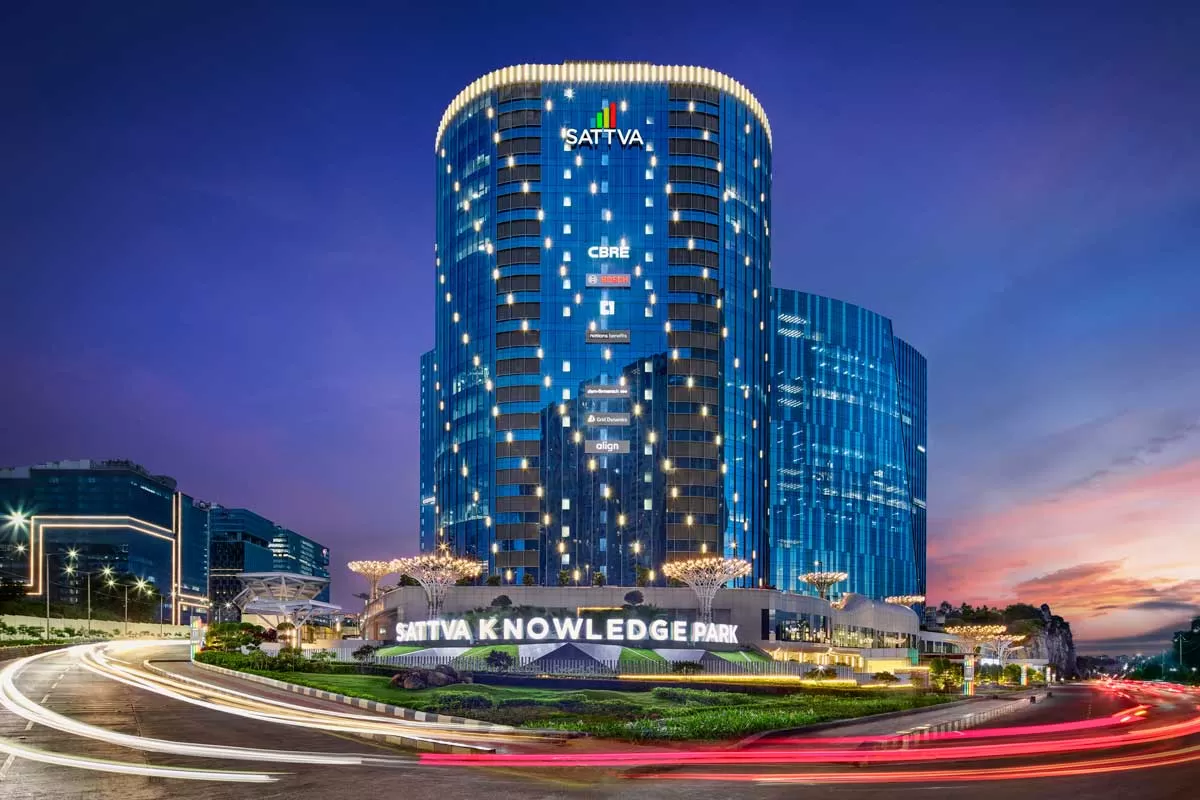
The Only Way is Up!
In 2025, India’s real-estate market will be driven by a confluence of economic, demographic and policy-driven factors. Among these, Boman Irani, President, CREDAI National, counts rapid urbanisation, the rise of the middle class, policy reforms like RERA and GST rationalisation, and the Government’s decision to allow 100 per cent FDI in construction development projects (including townships, housing, built-up infrastructure, and real-estate broking services).In the top metros, especially Bengaluru, followed by Hyderabad and Pune, the key drivers will continue to be job creation a..

Organisations valuing gender diversity achieve higher profitability
The building materials industry is projected to grow by 8-12 per cent over the next five years. How is Aparna Enterprises positioning itself to leverage this momentum and solidify its market presence?The Indian construction and building materials industry is projected to witness significant expansion, with estimates suggesting an 8-12 per cent compound annual growth rate (CAGR) over the next five years. This growth is fuelled by rapid urbanisation, increased infrastructure investments and sustainability-focused policies. With India's real-estate market expected to reach $ 1 trillion by 2030, t..
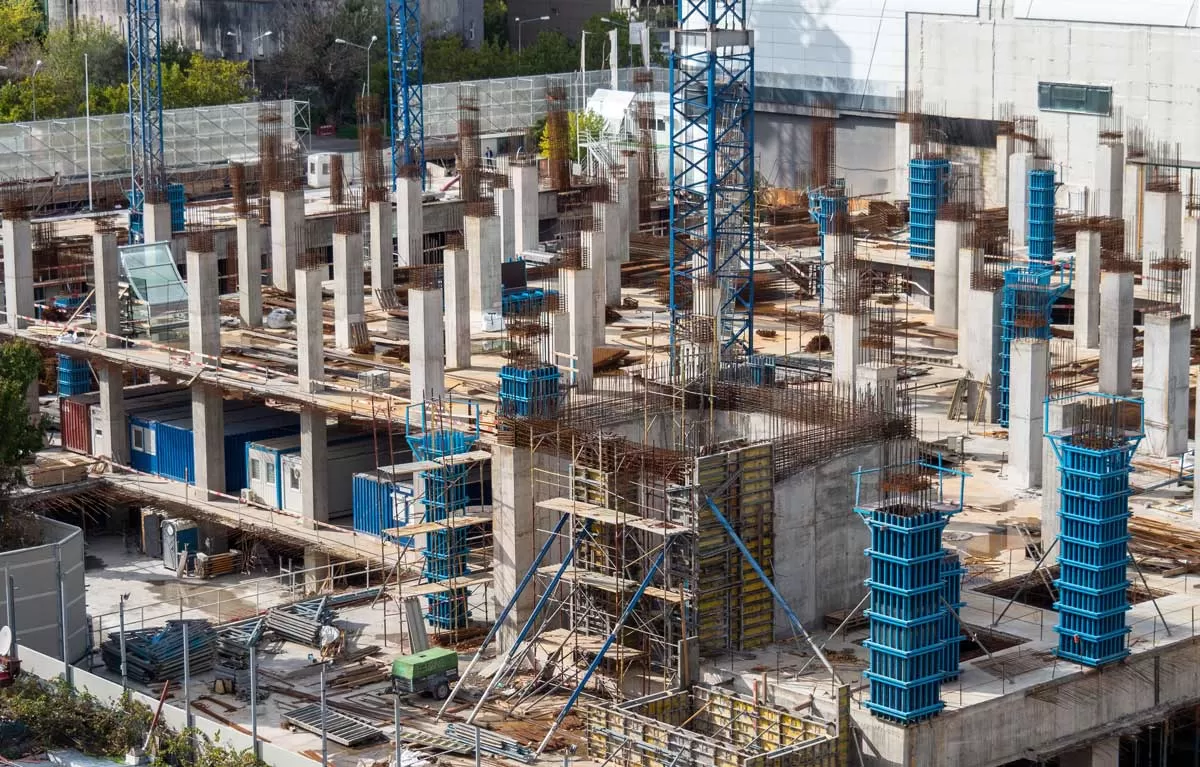
Dealing with Delays
Delays have beleaguered many a construction project in India, hampering the country from building to its ability and potential, and leading to additional costs incurred by the contractor. The reasons for delayIn India, delays mainly occur owing to obtaining statutory approvals, non-provisioning of right of way, utility diversion and approval of drawings and design. Delays are broadly classified based on responsibility and effect. Excusable delays arise from factors beyond the contractor’s control, such as force majeure events or employer-induced delays. These delays generally entitle th..
Latest Updates
Recommended for you
Subscribe to Our Newsletter
Get daily newsletters around different themes from Construction world.
Advertisement
Advertisement
subscribe to the newsletter
Don't miss out on valuable insights and opportunities
to connect with like minded professionals




